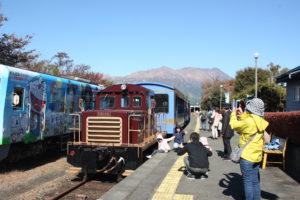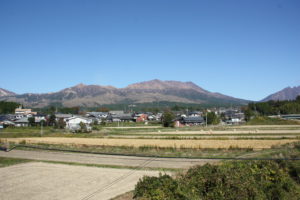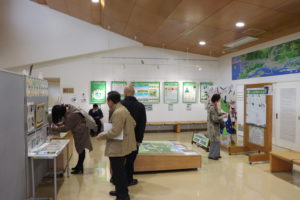Minami Aso railway
The Minami Aso railway is a private railroad offering a very scenic
ride between Takamori and Tateno in the south east of the caldera.
Lovely and magnificent scenery of Aso can be enjoyed.
 |
 |
 |
March 01, 2025
Environment tour for Kitakyushu citizen group
We have operated Environment tour for Kitakyushu citizen group and visited
Hibikinada Biotope and Munakata.
 |
 |
 |
February 28, 2025
Canal boat cruise
One of the most exciting experience in Yanagawa is Canal boat cruise which is to board
a small boat called the Donkobune and slowly go down the river skillfully maneuvered by
a boatman with bamboo pole.
 |
 |
 |
February 27, 2025
Harajiri waterfall, Oita-prefecture
It is called Niagara Falls of Japan. The Ogata river, running through the center of the
Ogata plain in Oita-prefecture, the flows furiously down a cliff and creates Harajiri waterfall.
 |
 |
 |
February 26, 2025
Hiburi-shinji, annual festival at Aso Shrine
Hiburi-shinji is the annual festival held at Aso Shrine in Aso on March 25, 2025,
Kumamoto-prefecture. Hiburi-shinji is a Shinto ritual that signifies the wedding
ceremony of the gods. When the deity of the Himegami wrapped in oak branches
and leaves arrives, the parishioners all celebrate by lighting torches made from
grass and waving them around.
 |
 |
 |
February 25, 2025
Cherry blossom in Akizuki
It is till in Winter in Japan, and we are waiting for spring when the cherry blossoms
start to bloom.
In Akizuki, which has 200 cherry trees, the cherry blossoms are expected to
bloom in early April.
 |
 |
 |
February 24, 2025
We have just started Instagram for introducing the information on Kyushu and
you can use for making tour planning.
Please visit our Instagram site by clicking the photos.
 |
 |
 |
February 23, 2025
Japanese restaurant, Yoshino
I went to restaurant Yoshino in Nakatsu for investigation of meals and took
Japanese cuisines for lunch.
 |
 |
 |
February 22, 2025
Nokonoshima Island
Nokonoshima, in the middle of Hakata Bay Beautiful flowers can be enjoyable throughout
the year.
The information is posted on Instagram for Japan Kyushu tourist,
click the Photos to see Instagram.
 |
 |
 |
February 21, 2015
Special cuisine for Hina doll festival
This is a Special cuisine for Hina doll festival at authentic Japanese restaurant,
Shirakabe in Ukiha.
The chef who makes that cuisines also has experienced the imperial family’s cook.
 |
 |
 |
February 20, 2025
